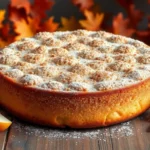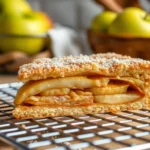We’ve all been there – craving that perfect chocolate chip cookie but needing to avoid gluten. The good news? You don’t have to sacrifice flavor or that beloved chewy texture when baking gluten-free. Our foolproof gluten-free chocolate chip cookies deliver all the nostalgic comfort of traditional cookies without any of the wheat flour.
These cookies prove that gluten-free baking can be just as delicious as conventional recipes. We’ve perfected the blend of alternative flours to create cookies that are impossibly soft on the inside with slightly crispy edges. Each bite bursts with melty chocolate chips and that unmistakable homemade cookie taste.
Whether you’re managing celiac disease or simply choosing to reduce gluten in your diet, these cookies will become your new go-to treat. They’re so good that even gluten-loving friends and family won’t guess they’re made without traditional flour. Let’s jump into creating these irresistible cookies that’ll have everyone asking for the recipe.
Ingredients
Our gluten free chocolate chip cookies require just a handful of simple ingredients that work together to create the perfect texture. We’ve carefully selected each component to ensure your cookies turn out soft and chewy every time.
Dry Ingredients
- 2 cups gluten free flour blend (containing xanthan gum)
- 1 teaspoon baking soda
- 1 teaspoon salt
- 1/2 teaspoon xanthan gum (if your flour blend doesn’t contain it)
Wet Ingredients
- 1 cup unsalted butter, softened to room temperature
- 3/4 cup packed light brown sugar
- 1/2 cup granulated sugar
- 2 large eggs, room temperature
- 2 teaspoons pure vanilla extract
Mix-ins
- 2 cups semi-sweet chocolate chips
- 1/2 cup chopped walnuts (optional)
Equipment Needed

Making perfect gluten-free chocolate chip cookies doesn’t require any specialized equipment beyond standard kitchen tools. We’ve found that having the right basic equipment makes the entire process smoother and ensures consistent results every time.
Essential mixing equipment includes medium and large bowls for whisking dry ingredients and combining wet and dry mixtures. A whisk or sturdy spoon works perfectly for mixing ingredients thoroughly. If you plan to brown butter for enhanced flavor, keep a skillet handy.
Optional but helpful tools include a stand mixer or electric hand mixer for creaming butter and sugar, though mixing by hand works just as well. We recommend using a cookie scoop to ensure uniform cookie sizes and easy portioning, which helps achieve even baking results.
Baking essentials start with half sheet pans as your standard baking sheets. Parchment paper or silicone baking mats prevent cookies from sticking and promote even baking. A cooling rack allows cookies to cool quickly and evenly after baking, preventing them from becoming soggy on the bottom.
| Equipment Category | Essential Items | Optional Items |
|---|---|---|
| Mixing | Medium bowl, Large bowl, Whisk/Spoon | Stand mixer, Electric hand mixer |
| Baking | Half sheet pans, Parchment paper | Silicone baking mats, Cookie scoop |
| Finishing | Cooling rack | Skillet (for browning butter) |
All of these tools are accessible for home bakers of any experience level. We’ve designed this recipe to work with equipment most people already have in their kitchens, making gluten-free baking approachable for everyone.
Instructions
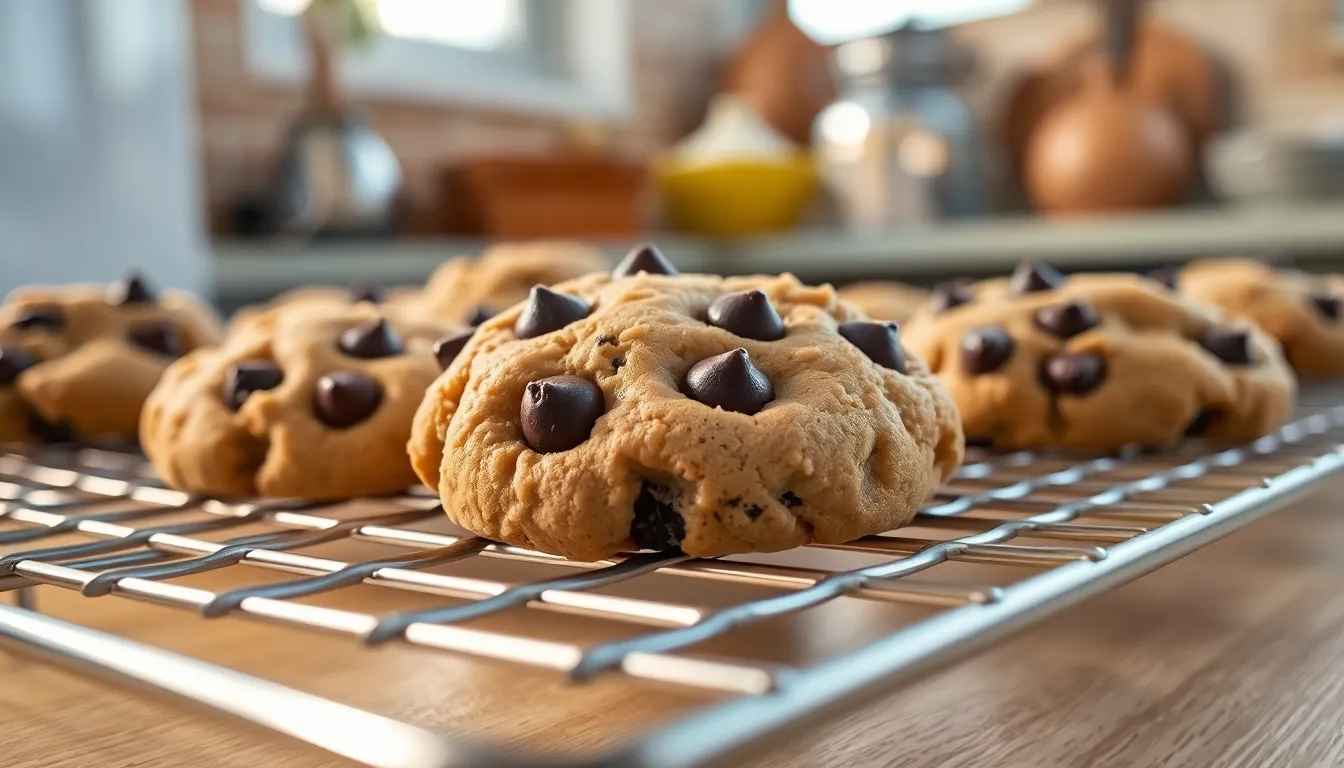
Follow these detailed steps to create perfectly soft and chewy gluten-free chocolate chip cookies. We’ll guide you through each stage to ensure bakery-quality results every time.
Prep the Dough
Beat together the softened unsalted butter, granulated sugar, and brown sugar in your large mixing bowl until the mixture becomes smooth and well combined. Add the large egg, molasses, and vanilla extract to the butter mixture, mixing until everything is thoroughly incorporated.
Gradually mix in the gluten-free flour, baking powder, baking soda, and salt until a cohesive dough forms. Fold in the chocolate chips gently to distribute them evenly throughout the dough without overmixing.
Chill the Dough
Place the prepared dough in the refrigerator for 2 hours to improve texture and structure. This chilling step helps the cookies maintain their shape during baking and creates a better final texture. While optional, we recommend this step for optimal results.
Shape and Bake
Preheat your oven to 375°F (190°C) while the dough finishes chilling. Use a spoon or cookie scoop to form rounded balls of dough, placing them on your parchment-lined baking sheets with adequate spacing between each cookie.
Bake the cookies for 8-10 minutes or until the edges turn golden brown while the centers remain soft. Avoid overbaking to maintain the desired chewy texture.
Cool and Store
Allow the cookies to cool slightly on the baking sheet for a few minutes before transferring them to a wire rack. Let them cool completely on the wire rack to achieve the perfect texture.
Store your finished cookies in an airtight container for up to 5 days to maintain freshness and prevent them from becoming stale.
Tips for Perfect Gluten Free Chocolate Chip Cookies
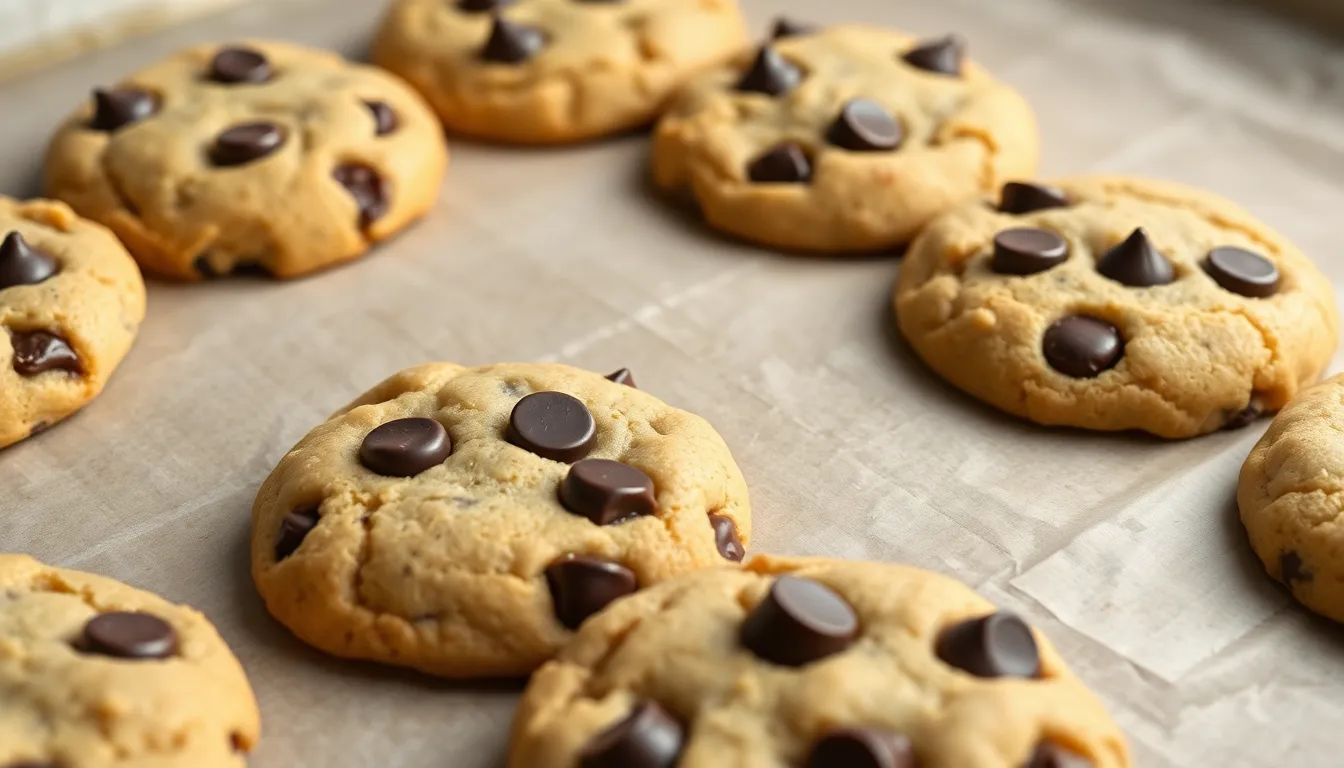
Mastering gluten free chocolate chip cookies requires understanding the unique properties of alternative flours and adjusting techniques accordingly. We’ve gathered essential tips to help you achieve bakery quality results every time.
Choosing the Right Gluten Free Flour
Combining different types of gluten free flours creates the ideal texture and structure for our cookies. We recommend using a blend of gluten free measure for measure flour paired with almond flour to achieve optimal results.
Xanthan gum acts as a crucial binding agent when working with gluten free ingredients. Adding this ingredient helps improve texture by providing the structure that gluten typically offers in traditional baking.
| Flour Type | Purpose | Benefit |
|---|---|---|
| Measure-for-measure flour | Base structure | Provides bulk and familiar texture |
| Almond flour | Texture enhancement | Adds moisture and richness |
| Xanthan gum | Binding | Improves structure and prevents crumbling |
Preventing Spreading
Room temperature butter creates the foundation for cookies that maintain their shape during baking. Soft butter can lead to thinner cookies that spread excessively across the pan.
Chilling the dough becomes essential when we notice excessive spreading tendencies. We can refrigerate the dough for 30 minutes or more to help cookies hold their shape better.
Adjusting our baking approach prevents unwanted spreading issues. We recommend baking for a shorter time while considering raising the oven temperature by 25 degrees to achieve better results.
Achieving the Perfect Texture
Resting the dough for approximately 30 minutes allows the flours to fully hydrate and improves overall texture. This simple step makes a important difference in our final cookie quality.
Melted or browned butter transforms ordinary cookies into extraordinary treats. Using melted butter adds chewiness while browned butter contributes a nutty depth of flavor that elevates our cookies.
Cream cheese creates an unexpected but effective texture enhancer in gluten free baking. Incorporating this ingredient enhances both chewiness and flavor while adding moisture to prevent dryness.
Parchment paper ensures our cookies release easily from baking sheets without sticking. This simple tool prevents frustration and maintains the beautiful appearance of our finished cookies.
Storage Instructions

Proper storage ensures our gluten-free chocolate chip cookies maintain their delicious taste and texture for days or even months. We recommend following exact guidelines for both baked cookies and raw cookie dough to maximize freshness and quality.
Storing Baked Cookies
At room temperature, we store our freshly baked cookies in an airtight container where they stay fresh for up to 5 to 7 days. This method works best when cookies are completely cooled before sealing them away from air exposure.
Refrigeration extends storage time slightly, keeping cookies fresh in an airtight container for up to 7 days in the fridge. We find this method particularly useful during warmer months when room temperature storage might compromise cookie quality.
For longer storage, we freeze baked cookies in airtight, freezer-safe containers or sealable bags for up to 3 months. Before serving frozen cookies, we thaw them in the refrigerator to preserve their texture and prevent condensation from making them soggy.
Storing Cookie Dough
Raw cookie dough stores beautifully in the refrigerator for up to 5 days when kept in an airtight container. This method allows us to bake fresh cookies whenever cravings strike without starting from scratch.
We freeze cookie dough in freezer-safe containers or sealable, freezer-safe bags for up to 3 months for ultimate convenience. Before baking frozen dough, we defrost it completely in the refrigerator to ensure even baking results.
Maintaining Optimal Freshness
To maintain peak freshness, we recommend freezing cookie dough in individual balls and baking them as needed. This approach guarantees the freshest possible cookies while minimizing waste.
When cookies begin to feel stale, we revitalize them by microwaving for about 10 seconds. This quick technique restores their soft texture and makes day-old cookies taste freshly baked.
| Storage Method | Duration | Container Type |
|---|---|---|
| Room Temperature (Baked) | 5-7 days | Airtight container |
| Refrigerated (Baked) | 7 days | Airtight container |
| Frozen (Baked) | 3 months | Freezer-safe container/bag |
| Refrigerated (Dough) | 5 days | Airtight container |
| Frozen (Dough) | 3 months | Freezer-safe container/bag |
Make-Ahead Tips
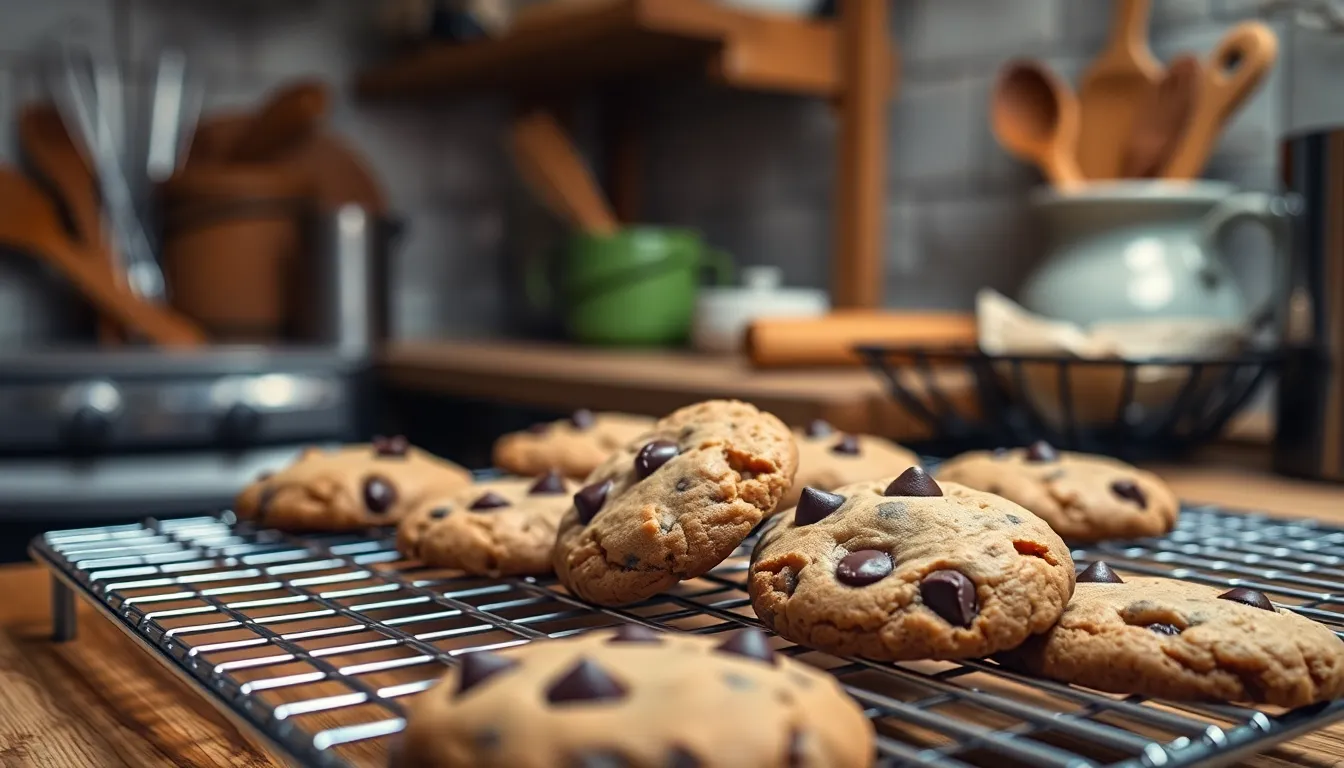
Planning ahead transforms your gluten-free baking experience from stressful to seamless. We recommend several strategic approaches that enhance both flavor and convenience when making these delicious treats.
Chilling the Dough Enhances Quality
Chilling your cookie dough for at least a few hours or overnight delivers multiple benefits for gluten-free baking. The cold temperature helps control spread during baking while significantly improving texture and flavor development. We find that overnight chilling produces the most consistent results with perfectly shaped cookies that maintain their structure in the oven.
Resting Time Improves Texture
Allow your prepared dough to rest for at least 30 minutes before baking. This crucial step helps gluten-free flours fully hydrate and ensures optimal texture in your finished cookies. The resting period allows the alternative flours to absorb moisture completely, resulting in cookies with better binding and chewiness.
Freezing Options Maximize Convenience
Cookie dough freezes beautifully for future baking sessions. Roll the dough into individual balls and freeze them on a parchment-lined baking sheet before transferring to airtight containers for long-term storage. This method allows you to bake fresh cookies whenever cravings strike without starting from scratch.
Baked cookies also freeze exceptionally well. Place cooled cookies on a parchment-lined baking sheet and freeze until solid before transferring to airtight containers. This prevents the cookies from sticking together and maintains their shape during storage.
Storage Duration Guidelines
| Storage Method | Duration | Storage Type |
|---|---|---|
| Room Temperature | 5 days | Airtight container |
| Cool, Dry Place | 7 days | Closed container |
| Frozen Cookie Dough | 3 months | Airtight container |
| Frozen Baked Cookies | 3 months | Airtight container |
These make-ahead strategies ensure you always have delicious gluten-free chocolate chip cookies ready for any occasion while maintaining their exceptional taste and texture.
Variations
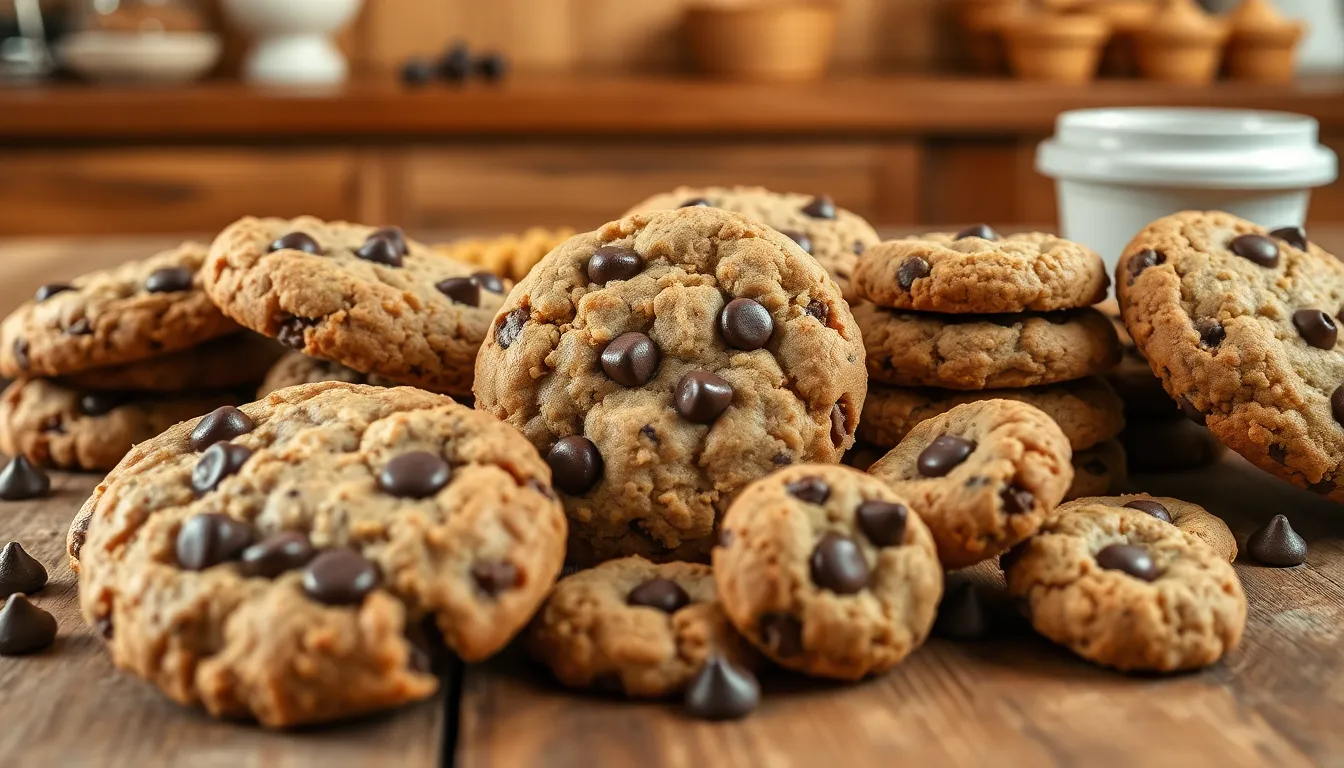
We love experimenting with our gluten-free chocolate chip cookie base to create exciting new flavors and textures. These variations transform our classic recipe into unique treats that satisfy different cravings.
Double Chocolate Chip
Our double chocolate version takes chocolate indulgence to the next level by incorporating cocoa powder directly into the dry ingredients. We add 1/4 cup of unsweetened cocoa powder to our gluten-free flour blend for a rich chocolate foundation. The key to achieving that deep chocolate flavor lies in using both semi-sweet and dark chocolate chips throughout the dough. We recommend reducing the flour blend by 1/4 cup when adding cocoa powder to maintain the proper dough consistency. These cookies develop an intense chocolate taste that chocolate lovers absolutely crave.
Oatmeal Chocolate Chip
We incorporate rolled oats into our base recipe to create a heartier texture and wholesome flavor profile. Adding 1 cup of gluten-free rolled oats to the dry ingredients provides delightful chewiness and visual appeal. Ensuring your oats are certified gluten-free remains crucial for maintaining the cookie’s gluten-free integrity. We fold the oats in after combining the wet and dry ingredients but before adding the chocolate chips. The oats create a satisfying texture contrast while complementing the sweet chocolate elements perfectly.
Mini Cookies
We create bite-sized versions of our classic cookies by using smaller portions of dough for entertaining and portion control. Using a small cookie scoop or teaspoon helps us form uniform mini cookies that bake evenly. These smaller cookies require adjusted baking time of 6-8 minutes instead of our standard 8-10 minutes. We watch carefully for golden brown edges as our indicator of doneness since mini cookies can overbake quickly. Perfect for parties or when you want to enjoy just a small sweet treat without the commitment of a full-sized cookie.
Troubleshooting Common Issues
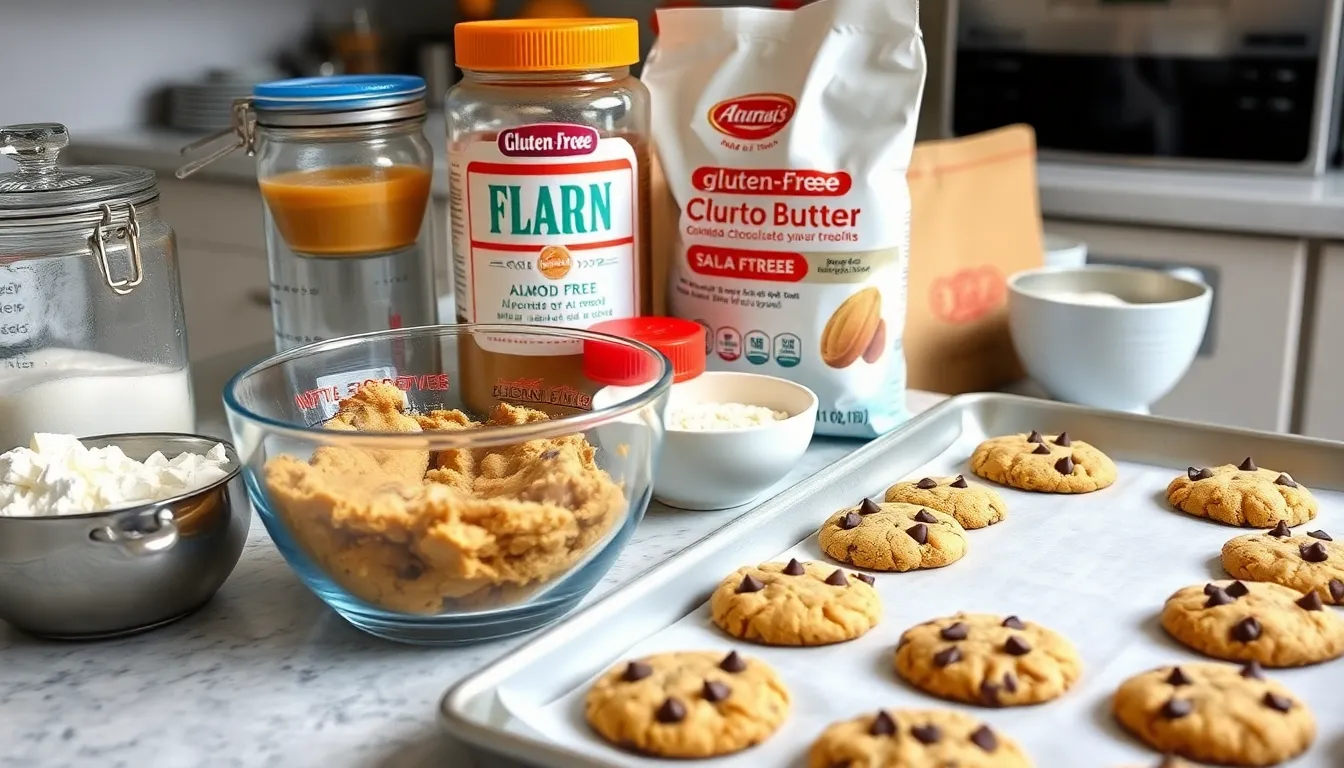
Even the most experienced bakers encounter challenges when making gluten-free chocolate chip cookies. We’ve compiled the most common problems and their answers to help you achieve perfect results every time.
Excessive Cookie Spread
When your cookies spread too much during baking, several factors might be at play. Insufficient gluten-free flour in your recipe can cause this issue, as can using butter that’s too warm or contains high fat content. Excessive sugar also contributes to unwanted spreading, while inadequately chilled dough fails to hold its shape in the oven.
Answers for spread control:
- Increase your gluten-free flour ratio by 1-2 tablespoons
- Reduce sugar by 2-3 tablespoons if cookies consistently spread
- Use butter at proper room temperature (should give slightly when pressed)
- Chill dough for at least 2 hours before baking
Dry and Crumbly Dough
Gluten-free flours absorb moisture differently than wheat flour, sometimes resulting in overly dry dough. This texture makes shaping difficult and can lead to cookies that fall apart.
Fix for dry dough:
- Add 1-2 tablespoons of milk to hydrate the mixture
- Incorporate an additional egg if the dough remains too crumbly
- Allow dough to rest for 10 minutes after mixing to let flour absorb moisture
Greasy Cookie Texture
Butter overload creates an unpleasant greasy mouthfeel that masks the cookie’s flavor. This issue often occurs when recipes don’t account for the different fat absorption rates of gluten-free flours.
Greasy texture solution:
- Substitute half the butter with almond butter for better fat balance
- Reduce total butter by 2-3 tablespoons
- Ensure butter is properly creamed rather than melted
Overly Crispy or Burnt Cookies
Temperature control becomes crucial in gluten-free baking since these cookies can go from perfect to overcooked quickly. Incorrect oven temperature or extended baking time causes this frustrating problem.
Prevention methods:
- Use an oven thermometer to verify actual temperature
- Reduce baking time by 1-2 minutes from the original recipe
- Check cookies at the minimum baking time rather than waiting for browning
Gritty Cookie Texture
Gluten-free flours sometimes create an unpleasant sandy texture when not properly hydrated. This grittiness occurs when flour particles don’t fully absorb liquid ingredients.
Texture improvement technique:
- Let mixed dough rest for 30 minutes before baking
- Ensure all wet ingredients are at room temperature for better incorporation
- Mix dough thoroughly but avoid overworking
| Issue | Primary Cause | Quick Fix | Prevention |
|---|---|---|---|
| Excessive spread | Warm butter/insufficient flour | Chill dough 2+ hours | Use room temp butter |
| Dry dough | Low moisture content | Add 1-2 tbsp milk | Rest dough 10 minutes |
| Greasy texture | Too much butter | Substitute with almond butter | Reduce butter by 2-3 tbsp |
| Burnt cookies | High oven temp | Check temp with thermometer | Reduce baking time |
| Gritty texture | Unhydrated flour | Rest dough 30 minutes | Room temp ingredients |
Understanding these common pitfalls helps us create consistently delicious gluten-free chocolate chip cookies. Each adjustment builds your confidence in gluten-free baking while ensuring your cookies turn out perfectly every time.
Conclusion
We’ve shown you that creating exceptional gluten-free chocolate chip cookies doesn’t require sacrificing taste or texture. With our tested recipe and expert tips you can bake cookies that rival any traditional version.
These cookies prove that gluten-free baking can be just as rewarding and delicious. Whether you’re managing celiac disease or simply exploring healthier options our approach delivers consistent results every time.
The beauty of this recipe lies in its versatility and reliability. From storage answers to creative variations we’ve equipped you with everything needed to make gluten-free baking a regular part of your kitchen routine.
Now it’s time to gather your ingredients and start baking. Your family and friends won’t believe these incredible cookies are gluten-free!
Frequently Asked Questions
How long do gluten-free chocolate chip cookies stay fresh?
Baked gluten-free chocolate chip cookies stay fresh for 5-7 days when stored at room temperature in an airtight container. They can also be refrigerated for up to 7 days or frozen for up to 3 months for longer storage. Proper storage maintains their delicious taste and chewy texture.
Can I make the cookie dough ahead of time?
Yes, you can make gluten-free cookie dough ahead of time. Store it in the refrigerator for up to 5 days or freeze it for up to 3 months. Chilling the dough for at least a few hours or overnight actually improves the texture and helps control spreading during baking.
What makes these cookies different from regular chocolate chip cookies?
These gluten-free chocolate chip cookies use a special blend of alternative flours and xanthan gum instead of wheat flour. Despite being gluten-free, they maintain the same soft, chewy texture with crispy edges and melty chocolate chips that make traditional cookies so irresistible.
Do I need special equipment to make gluten-free cookies?
No special equipment is required. You’ll need standard kitchen tools like mixing bowls, a whisk or spoon, and baking sheets. Optional tools include a stand mixer for easier creaming, cookie scoop for uniform sizes, and parchment paper to prevent sticking.
Why is my gluten-free cookie dough spreading too much?
Excessive spreading usually occurs from butter that’s too warm, insufficient chilling, or incorrect flour ratios. Use room temperature (not melted) butter, chill the dough for at least 30 minutes before baking, and ensure you’re using the correct gluten-free flour blend with xanthan gum.
Can I substitute ingredients in this gluten-free recipe?
While you can make some substitutions, gluten-free baking requires precise ratios. The recommended blend uses measure-for-measure gluten-free flour with almond flour. You can add mix-ins like walnuts or different chocolate chips, but avoid major flour substitutions without adjusting other ingredients accordingly.
How do I prevent my gluten-free cookies from being dry and crumbly?
Ensure your dough has adequate moisture by using room temperature eggs and proper butter consistency. Let the dough rest for at least 30 minutes to allow gluten-free flours to fully hydrate. Adding a small amount of cream cheese can also enhance moisture and texture.
What’s the best way to store leftover cookie dough?
Raw cookie dough can be refrigerated for up to 5 days or frozen for up to 3 months. For convenience, portion the dough into individual cookie balls before freezing. This allows you to bake fresh cookies whenever desired without thawing the entire batch.


